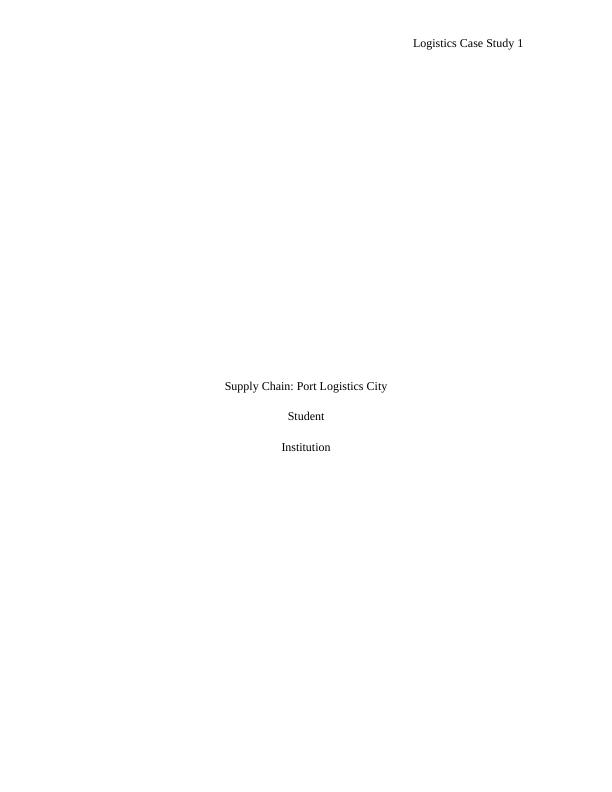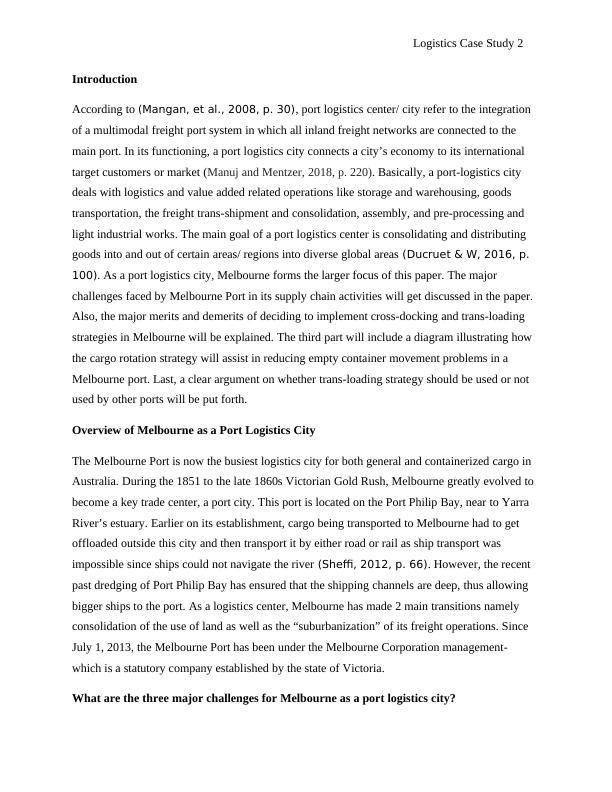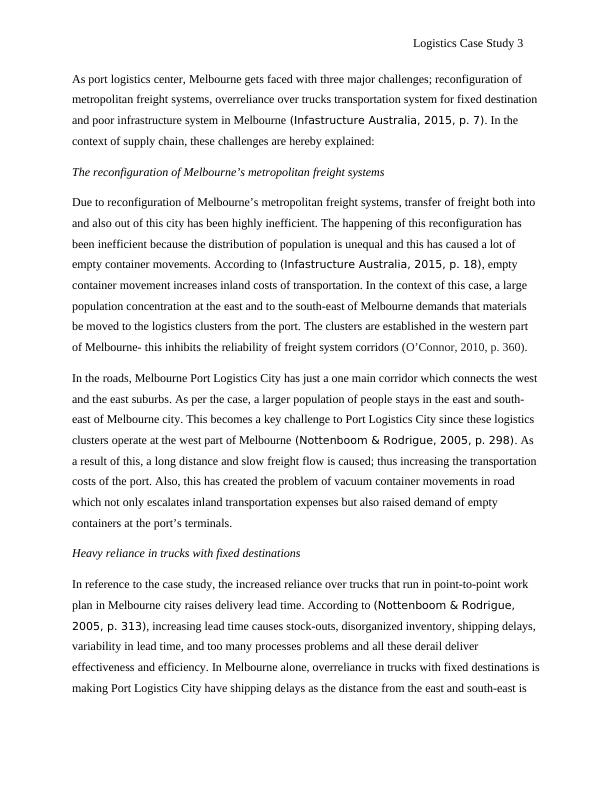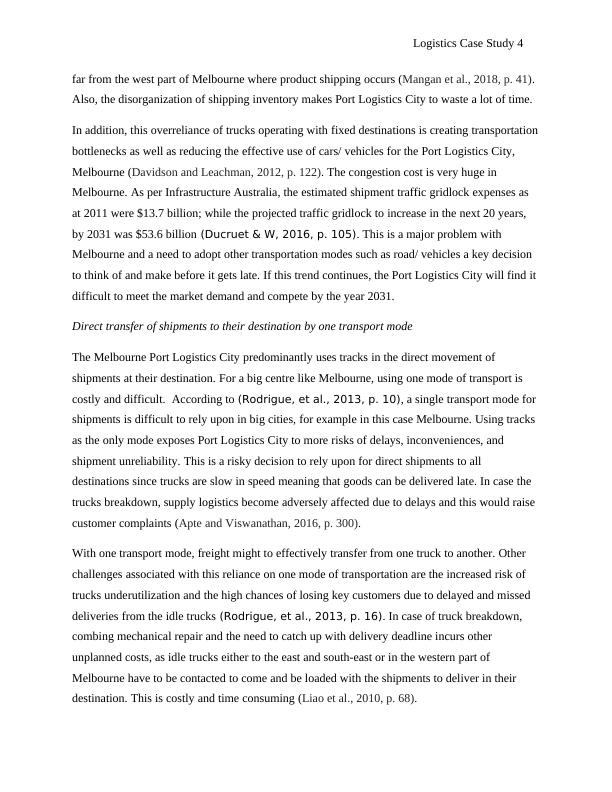Logistics Case Study 12: Supply Chain and Port Logistics City
A case study of the port logistics city concept in Melbourne, Australia, focusing on its integration of multimodal freight systems and its connection to global markets.
13 Pages3620 Words194 Views
Added on 2022-11-09
About This Document
This case study discusses the challenges faced by Melbourne Port in its supply chain activities, merits and demerits of implementing cross-docking and trans-loading strategies, and a cargo rotation technique to reduce empty container movements. It also explores whether trans-loading strategy should be used in other port logistic cities.
Logistics Case Study 12: Supply Chain and Port Logistics City
A case study of the port logistics city concept in Melbourne, Australia, focusing on its integration of multimodal freight systems and its connection to global markets.
Added on 2022-11-09
ShareRelated Documents
End of preview
Want to access all the pages? Upload your documents or become a member.
Port logistics City Assignment 2022
|13
|2758
|20
Logistics Management Assignment Solved (Doc)
|11
|3209
|27
Logistic and Supply Chain Management
|10
|2454
|410
Port Logistics City
|15
|3494
|373
Logistics Management: Challenges, Transloading Advantages and Disadvantages, Cargo Rotation Technique
|11
|3548
|257
Port Logistics City: Challenges, Strategies and Success of Melbourne
|13
|2749
|150




